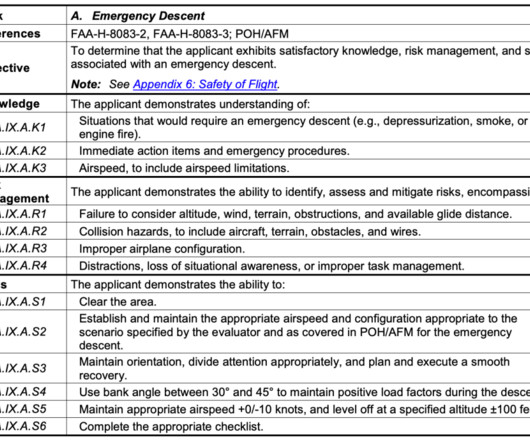A DPE’s Take on Deciphering the ACS: Emergency Descent
Fullthrottle Aviation
FEBRUARY 19, 2022
If the descent is conducted in turbulent conditions, the pilot must also comply with the design maneuvering speed (VA) limitations. As mentioned above, turbulence and type of emergency (such as a fire) can and will dictate the speeds and configuration to use.











Let's personalize your content